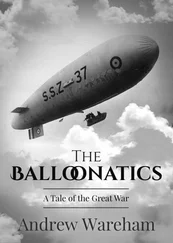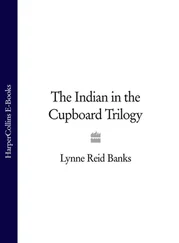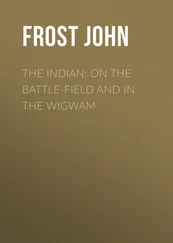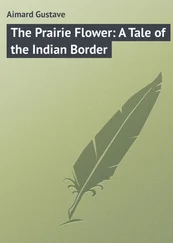Eugene Ware - The Indian War of 1864
Здесь есть возможность читать онлайн «Eugene Ware - The Indian War of 1864» весь текст электронной книги совершенно бесплатно (целиком полную версию без сокращений). В некоторых случаях можно слушать аудио, скачать через торрент в формате fb2 и присутствует краткое содержание. Жанр: Историческая проза, на английском языке. Описание произведения, (предисловие) а так же отзывы посетителей доступны на портале библиотеки ЛибКат.
- Название:The Indian War of 1864
- Автор:
- Жанр:
- Год:неизвестен
- ISBN:нет данных
- Рейтинг книги:3 / 5. Голосов: 1
-
Избранное:Добавить в избранное
- Отзывы:
-
Ваша оценка:
- 60
- 1
- 2
- 3
- 4
- 5
The Indian War of 1864: краткое содержание, описание и аннотация
Предлагаем к чтению аннотацию, описание, краткое содержание или предисловие (зависит от того, что написал сам автор книги «The Indian War of 1864»). Если вы не нашли необходимую информацию о книге — напишите в комментариях, мы постараемся отыскать её.
The Indian War of 1864 — читать онлайн бесплатно полную книгу (весь текст) целиком
Ниже представлен текст книги, разбитый по страницам. Система сохранения места последней прочитанной страницы, позволяет с удобством читать онлайн бесплатно книгу «The Indian War of 1864», без необходимости каждый раз заново искать на чём Вы остановились. Поставьте закладку, и сможете в любой момент перейти на страницу, на которой закончили чтение.
Интервал:
Закладка:
During December I got a pair of cavalry boots which I ordered from Omaha. It shows something in regard to the deterioration of money, and the price of things, when I say that those boots cost me $18. In normal times, on gold basis, they would have cost $5.
I also bought from one of the traveling outfits going west a twenty-pound keg of butter for $20 and a twenty-pound can of lard for $10, the prices being $1 and $0.50, respectively, per pound.
Concerning the relative location of Julesburg, there was some little difficulty as to the question whether Julesburg was in Nebraska or Colorado. For a while we called it Nebraska, but afterwards we were addressed as Julesburg, Colorado, and the post was deemed definitely located in Colorado, which was the correct place. But Fort Laramie was Idaho Territory. It is now in the eastern part of Wyoming, but that part of the country was then called Idaho Territory.
Chapter XXX.
Ben Holladay – Cold Gambling – Summary of Conditions – December 31, 1864 – Colonel Chivington – His Battle with Cheyennes – P. Edward Connor – Territorial Divisions – Troops Employed – Location of Posts – The Escort Lines
DURING December, as stated, Ben Holladay went through going west in a stage-coach, with a man named Leland, who was a great hotel man in New York City. The coach was a sort of Pullman conveyance. They had a mattress on the floor of the coach, and they slept in the coach, and when they rode, they rode with the driver, and on a seat on the top. They had another coach, in which there were servants, a cook, and supplies. Each of these coaches was drawn by six horses, and went as fast as the fastest. Holladay put in his time as long as he was at the post in receiving and sending off dispatches to the Gold Board in New York. They had in New York a speculative board which was gambling on the nation's good and bad luck, and the price of gold went up and down, governed by every little skirmish and battle of the war. It seemed to have had little reference to the actual amount of gold on hand. Holladay had a way of gambling on the gold market, and when he lost he delivered the actual gold, having a location on the Pacific coast in the gold-bearing country. Holladay's son, who went along the road shortly afterwards, said that his father, when going from the Pacific coast to New York, played the gold markets the whole way, and made $40,000 on the trip of about three weeks.
Taking the end of the year 1864, it is perhaps best for me to state what was the actual condition of things at that time. In the first place, the Indians between Cottonwood and Fort Kearney had committed depredations, the value of which was very great. They had harassed the frontiers in Minnesota, Iowa, Nebraska, Kansas, and Colorado. As stated, there was a squaw camp at Fort Laramie, where a lot of them were being fed. In the forts in southeastern Colorado, other Indians were being fed. The Arapahoes and Cheyennes, after committing all kinds of depredations, had pretended to surrender, and to come in and want peace. At Fort Lyon, down on the Arkansas river, the persons surrendered consisted of women and children and old men, who brought in a lot of worn-out horses used up in the raids of the frontiers; and they brought in some old guns that had become unserviceable. The young bucks, however, were on the war-path, and from these very Indian refugees at Fort Lyons occasional parties would go out, and rob a train and steal a lot of stock. There was no confidence to be placed in any of these Indians, They were a bad lot. They all needed killing, and the more they were fed and taken care of the worse they became. The condition was such in Colorado that a hundred-days regiment was raised, called the Third Colorado. The First Colorado, a brave and historic regiment, had a Colonel by the name of Chivington, and he had been drawn from the war to protect his own State against the ravages of these combined Cheyenne and Arapahoe Indians. The Government had sent in, as has been stated before, the Eleventh Ohio Cavalry, also our complete cavalry regiment of twelve companies, and then had drawn the First Nebraska from the front, down South, to help guard Nebraska, and had also raised a provisional home battalion to assist in the protection of the Nebraska frontier. The Government had deployed other regiments out on the Arkansas river, and along the Santa Fл trail, for the purpose of protecting that route, over a long strip of country.
I have stated that some of these Indians went to Denver, and wanted to make a treaty of some kind. The Indian idea was to have the Government feed the old people, women and children, while the bucks would ravage the country. As I have stated, the embassy to Denver was a failure, because the Denver people understood the Indian quite fully. After the Denver embassy the murdering and plundering along the frontier and line became so great that Colonel Chivington made up his mind to take the field, and hunt up the Indian villages and punish them. While he was getting ready, the refugee Indians who were being fed at Fort Lyons went out and plundered some trains and killed some women and children, and carried their scalps to the Cheyenne villages up on Sand Creek.
There came a great fall of snow in the latter part of November, about two feet deep, and Colonel Chivington, taking advantage of that fact, and knowing that the Indians could not travel in deep snow as the whites could, started out, and after a three-days march, day and night, he came onto one of the Cheyenne villages, and is reported to have killed about five hundred of them, captured a large lot of horses, and scattered the band; although he lost nine killed and forty wounded, because the Indians put up a pretty good fight. That fight occurred on November 29th, 1864. Among the humanitarians of Boston it was called the "Chivington Massacre," but there was never anything more deserved than that massacre. The only difficulty was that there were about fifteen hundred Indian warriors that didn't get killed. But they were scattered over the country, and started supposedly east on the Republican and Solomon rivers. They were in this scattered condition when the end of the year arrived. Nobody exactly knew where they were, but it was said that there were scalp-dances in all of the Cheyenne bands, and that scalps were carried up into the Sioux villages and into the northern Cheyenne villages for the purpose of making medicine, and getting up a war spirit, north of the Platte.
I will try to give a glance now as to the condition of the commands and their situation. At this time the Indian country was in a department which had had several names, but which at that time was called the "Department of Kansas and the Territories." Major-General Samuel R. Curtis was commander at Fort Leavenworth. The District of Nebraska comprised the line that went from Omaha to Laramie, and west of Laramie to Great South Pass. That was one long line of road, and was the great northern route that was to be guarded. This territory was divided into two sub-districts, one running from Omaha up to and including Julesburg. That was called the eastern sub-district, and was in command of Colonel R. R. Livingston of the First Nebraska Cavalry, with headquarters at Fort Kearney. The western district began west of Julesburg, with its first post at Mud Springs, and extended along the route to South Pass. This western sub-district was commanded by Lieutenant-Colonel William O. Collins, of the Eleventh Ohio, of whom I have spoken. The road from Julesburg to Denver was the northern district of Colorado, and was commanded by Colonel J. M. Chivington, of the First Colorado. Brigadier-General R. B. Mitchell was in command from Omaha through to South Pass, covering the two sub-districts of which I have spoken. Brigadier-General P. Edward Connor commanded at Salt Lake City. Neither Colonel Chivington nor General Connor was under the command of General Mitchell.
Читать дальшеИнтервал:
Закладка:
Похожие книги на «The Indian War of 1864»
Представляем Вашему вниманию похожие книги на «The Indian War of 1864» списком для выбора. Мы отобрали схожую по названию и смыслу литературу в надежде предоставить читателям больше вариантов отыскать новые, интересные, ещё непрочитанные произведения.
Обсуждение, отзывы о книге «The Indian War of 1864» и просто собственные мнения читателей. Оставьте ваши комментарии, напишите, что Вы думаете о произведении, его смысле или главных героях. Укажите что конкретно понравилось, а что нет, и почему Вы так считаете.












